Steel’s Naval Architecture
The Elements and Practice of Naval Architecture by David Steel, first published in 1805. The SCA reprint was published in 1977 with a new Foreword by Dr. Alan McGowan of the National Maritime Museum, Greenwich. The offering is a limited edition of 500 copies only, of which less than 20 sets remain.
Naval Architecture is one of the most important works on the subject in English. Published at a time when there was a great need for shipbuilding to standardise, Steel’s two volumes led the way. This important work has proved invaluable to both those who restore ships of this era, and to model makers. David Steel shows you exactly how these great ships were built, and with the original publication date being 1805, he shows how they were built at the time of Nelson’s victory at Trafalgar.
The reprint follows the same size and format of the original. The paper used has been chosen to produce a close match to the original. Naval Architecture comprises of two volumes, one of text and the other an elephant sized folio of ship draughts. Today, the original folio of ship draughts is excessively rare. This is due to the individual draughts being taken from the folio, so that the actual delineations for the ship to be built could be drawn on the mould-loft floor.
Summary of the main contents: (ISBN 978-0-905887-00-5)
Text Volume: Quarto (10.6″x 9.2″ / 270mm x 235mm)
Book the First: Explaining the First Elementary and Theoretic Principles.
Chapter I: An explanation of the terms and of some elementary principles requisite to be understood in the theory and practice of shipbuilding.
Chapter II: Of fluids and their action on floating bodies as investigated by actual experiment.
Chapter III: On the figure and construction of ships and vessels in general, and on the means of giving them the most desirable qualities: with remarks on the different classes of British shipping.
Book the Second: Containing the practical rules for the construction of ships and vessels; with all requisite tables, etc.
Chapter I: General observations and definitions.
Chapter II: Practical methods of finding the gravity, displacement, and tonnage of a vessel; including the centres of gravity and displacement; with the point of stability or meta-centre.
Chapter III: Instructions for delineating the several draughts and plans of ships.
Chapter IV: Explanation of the methods of laying off all parts of a ship on the mould-loft floor, preparations to the actual construction or building.
Chapter V: Of the method of construction called whole moulding.
Chapter VI: Practical directions for the actual building, progressively arranged.
Chapter VII: Miscellaneous observations of improvements and projected improvements; including some instructions and remarks upon subjects immediately connected with naval architecture.
Tables for forming the bodies of ships and vessels of each class.
Tables of the principal dimensions and scantlings of ships and vessels of each class.
Folio of Draughts: Elephant Folio (19.6″ x 20″/ 492mm x 508mm). The following is a selection of the Thirty-Eight Large Draughts. Draught measurements range from 4 ft 3.5 inches x 1 ft 5.5 inches to 2 ft 7.75 inches x 11.75 inches.
Draughts I-IV: The following draughts contain the Sheer-draught, Body Plan, Disposition of the Frames, Planking, Inboard Works, Plans of the Gun Deck and Orlop, Plans of the Upper Deck, Quarter Deck and Forecastle of an Eighty-gun Ship upon two decks.
Draught VIII: Midship Sections of a Seventy-four gun ship and a Frigate.
Draught IX: Sheer-draught, Half Breadth and Body Plan of a Forty-gun Frigate, etc.
Draught X: A Sloop of War, of the latest construction.
Draught XII: Sheer-draught, Half-Breadth and Body Plan of the Brigs of War, of 18 guns, constructed in the year of 1804.
Draught XVII: Plans and Section of the Interior of a Fire Ship.
Draught XVIII: Plans and Section of a Bomb Vessel.
Draught XX: Sheer-draught, Half-Breadth and Body Plan of an East Indiaman of 1,257 tons.
Draught XXIII: A Brig Collier, of Improved Construction, burthen 170 tons.
Draught XXX: A Man of War’s Launch, Pinnace, Cutter and Yawl.
Draught XXXIII-XXXVIII: A series of plates showing the Laying Off of the Fore Body and Moulds, After Body, Fore and After Cant Bodies, Transoms, Square Tuck and Round-aft Tuck, Hawse Pieces, Harpins and several Parts of the Head and Stern of an Eighty-gun Ship.
ISBN 978 0 905 887 00 5 Buckram Edition.
Limited edition of 500 copies only with each having a signed numbered certificate. We now have fewer than thirty sets left.
Prices: For estimating the cost of postage, both volumes packed together weigh 10 KG / 22 Lbs.
Bound in Blue Buckram with gilt title and devices housed in two green card cases: £775.00 with free shipping in the UK. This reprint having been published in 1977, we are now getting to the end of stock with fewer than 20 sets left. Due to the time the remaining sets have been in various warehouse, there has been some crinkling to the outer edges of the very large Plate 1: Sheer draught of the 80 ship, but not damaging the central image. For the text volume there may be some foxing to the title page and last page.

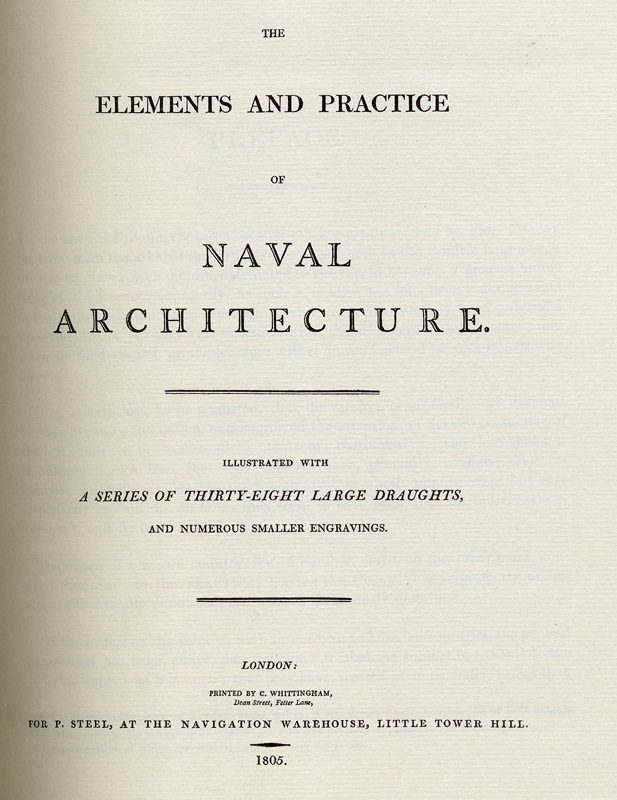
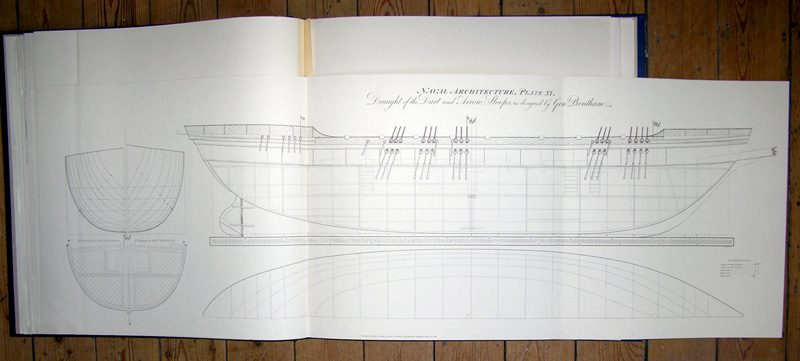
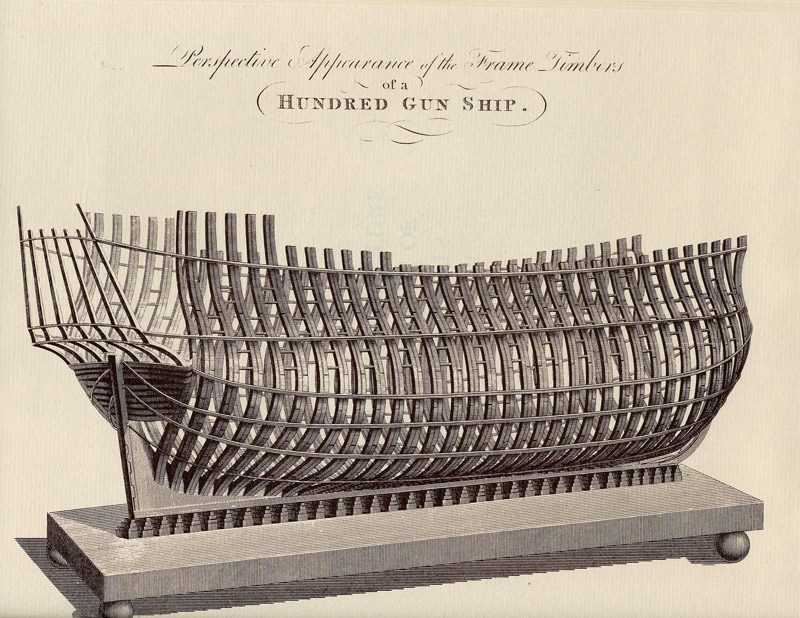
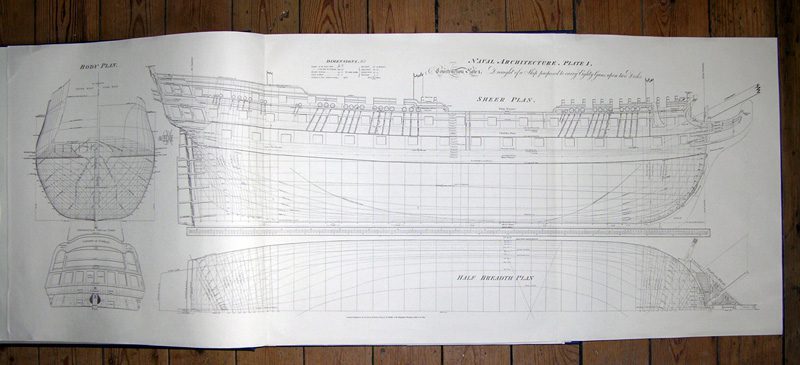
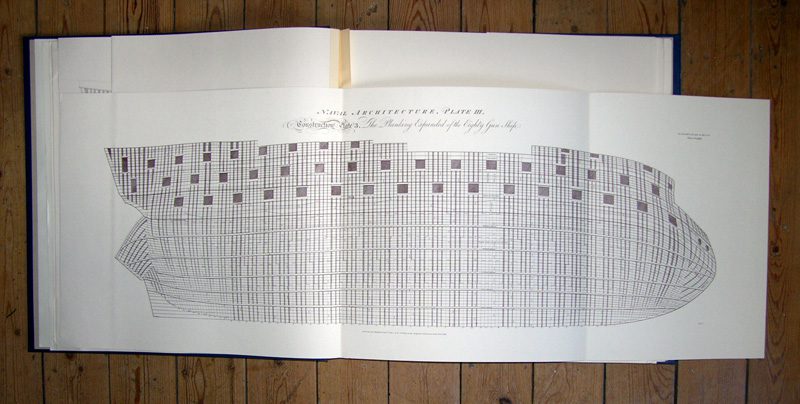



Reviews
There are no reviews yet.